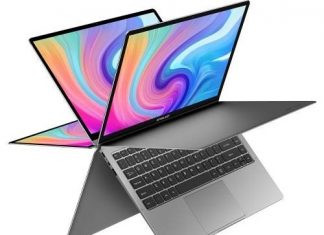For many years iPhones have acquired an impressive reputation as very secure and reliable phones. The often acknowledged and praised iOS security is sometimes the primary reason why customers buy Apple products. However, a user that is unaware of potential threats does not understand what is a proxy and which networks should be used is much more susceptible to hacking.
Most created viruses and malware target the Android operating system. Malicious software downloads from app stores almost exclusively affect Android phones. In contrast, apple previews every app in their app store – the only software source for iPhones.
Apple products are usually safer because iOS is a closed operating system that does not release its source code to app developers, iPhone owners cannot change or influence code on their phones. That is why most hackers choose to avoid iOS and look for vulnerabilities in Android-powered devices. Creating malicious software for iPhones is not worth the hassle.
That being said, in recent years, Apple has had some troubles in maintaining iPhone’s security. Let’s discuss these vulnerabilities and how to avoid them.
The Hacking of Al Jazeera Journalists
The reputation of nearly impenetrable iOS started disintegrating when the spyware sold by Israeli security company NSO Group managed to breach and take control of numerous iPhones. Investigative journalists from Al Jazeera were hacked with a simple iMessage, which was armed with malware. A supposed zero-click, zero-day attack took control of their phones without any clicks on the receiving end. The hackers just sent the message and immediately got full control of their iPhones.
Citizen Lab, an interdisciplinary laboratory in the University of Toronto that managed to uncover the hacking tool, has named it “Kismet.” Through a simple iMessage, Kismet managed to penetrate iPhone defenses and install Pegasus – a well-known virus, also developed by NSO Group. This extremely powerful spyware can track and intercept calls, read text messages, collect passwords, track mobile phones, collect information from apps, and access iPhone’s microphone or video camera on command.
Kismet uncovered a big crack in iPhone’s security that remained unfixed for more than a year. Luckily, Apple patched this problem in the release of iOs 14. An update also includes multiple new security and privacy features to strengthen the security of an iPhone.
However, as secure as iOS 14 might be, there are ways to improve your iPhone’s security manually. Use these tips to avoid iPhone vulnerabilities and reinforce your phone’s protection.
Always keep Your iOS Up to Date.
Updating your operating system is important for the security and stability of an iPhone. Running the newest version of iOS not only adds new features but also fixes potentially harmful flaws in its coding. If an update notification pops up – do not delay it. Even if you are not concerned about your security, an iOS update has great stability improvements that seek to create the perfect user experience.
If you want to update your version of iOs manually, go to your settings, select General, and click on Software Update. You’ll either be informed that you are using the newest version of the operating system or prompted to download and install an upgrade.
Use a Longer Passcode
Back in the day, a hacking tool called GrayKey has been used to uncover iPhone passcodes. Law enforcement used it to break into phones and use them for evidence.
Using longer passcodes made the work of GrayKey much more difficult. When in use, this hacking tool ignored the iOS lock delays after incorrect attempts and kept guessing through all possible numbers.
Although this hacking tool was primarily used by the police, similar hacking devices were allegedly stolen or developed by criminals to break into our phones.
Thankfully, Apple blocked the use of Graykey in the iOS 12 update. It is a victory for our privacy, but there are many similar ways to break into our phones. If some version of Graykey manages to come back, it should better be greeted with a long and complicated passcode. The more digits we use, the more possible combinations a password can have, but using passphrases instead of numbers creates even more potential combinations, extending the guessing game to absurd lengths. Unpredictable letter and symbol combinations with case sensitivity neutralize the effectiveness of such hacking tools.
Protecting an iPhone with fingerprints and facial recognition is only a matter of convenience. Without these protections, your phone can still be opened with a passcode. Make sure to create a ridiculous password that nobody will be able to guess.
Avoid Public Proxies!
An iPhone with an iOS 14 operating system is a relatively safe phone. That being said, some users willingly put themselves in danger by using public proxies. Even though they are free, public proxy networks are often set up to bait uninformed users and hack their devices. Sending sensitive data packages through an unidentified public proxy can lead to data theft and distribution. Also, even if we exclude the possibility of getting hacked, free proxies are abysmal when compared to services offered by many reliable proxy providers. Stay away from public proxies, and your phone will be much safer.
Although the iPhone is by no means perfect, after the latest update, it is still a very safe and reliable phone. Make sure to use preventive measures, keep your iOS up to date, and your privacy will stay well protected.









![[Buy Now] Gobook Y1102 Review Notebook “Offer” Price (Buying Guide) Gobook Y1102](https://www.techinpost.com/wp-content/uploads/2017/12/Gobook-Y1102-vista-frontal-324x235.jpg)

